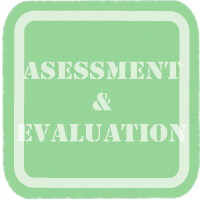 Learning Contracts
Learning Contracts
 |
Classroom management is part of a teacher’s daily work activity. Sometimes the focus is on managing the entire class, at other times the focus is on only one student. The teacher needs to be wary when focusing their attention on one student, since it could affect their self-esteem or limit their learning opportunities if the student needs to be removed them from the class. An effective technique which increases the likelihood of a positive outcome for the student (and also for the class and the teacher, too) is to negotiate a learning contract with that student. A learning contract is an agreement negotiated between the student and the teacher in order to change the student’s behavior and improve their opportunities to learn. The benefit of a learning contract is that it can affect a positive change in a student’s behaviour while still involving that student in the class. In this section we will examine various aspects of a learning contract; such as, what it is, it’s benefits, and how to go about creating it. |
What is a learning contract?
A learning contract is an agreement established between a student and the teacher; it sometimes involves the student’s parents. The contract specifies concrete learning and/or behavioural objectives for the student that all parties agree need to be achieved. The contract also specifies:
- the goals of the contract
- the obligations of each party to the contract
- the time frame within which the terms of the learning contract are to be fulfilled
- the basis on which it will be determined that the conditions of the contract were met
Why create a learning contract?
There may be many reasons that teachers set up learning contracts with their students, but the end goal always involves an improvement in some aspect of a student’s performance at school. In some cases, learning contracts are established in order to improve a student’s behavior in class regardless of whether the student is being deliberately disruptive or is easily distracted by others. In other cases, learning contracts are set up if a teacher recognizes that a student is not meeting their academic potential. However, whatever the reason for the learning contract, one characteristic is common in all cases: the student cannot be left out of the process of negotiating and creating the contract. It is crucial to engage the student and make him feel that he has an interest in fulfilling the arrangement; the best way to accomplish this is to show the student that their concerns are being considered and accommodated. Even if the student’s parents need to become involved in negotiating the contract, the student’s concerns must be incorporated into the final agreement.
back to top
What are the benefits of a learning contract?
When a student becomes a party to a learning contract he becomes more intimately involved in his own education; that is, the learning process becomes more self-directed. The responsibility granted the student by engaging in the contracting process and in making decisions concerning their own education often increases their internal motivation. The contract gives the student goals other than just working for marks; it allows the student to gain satisfaction from meeting their goals. Many students respond well to this technique as they appreciate the efforts made by their teacher to recognize and accommodate their individual needs. Benefits may accrue to everyone involved in the learning contract process: the student benefits from working at an appropriate level, the teacher gains a satisfaction from seeing the students make an effort and grow, and classroom time is not taken up by regular distractions. In addition, this process may also teach the student some life skills; for example, they may learn the importance of setting goals and working toward achieving them.
What process is included in the creation of a learning contract?
Information taken from “Teacher and Student Assessment” (see link below):
Having established the goals of the learning contract, the following steps can take place:
|
Teacher |
Student |
Before beginning contract |
-determine student’s knowledge level, so that the student can move ahead from that point |
-fill out the “KWL chart” to determine what needs to be learned |
During the contract |
-keep checklists and anecdotal records |
-complete the “Self-Evaluation Form[s]” (see the link below) in order to reflect on one’s work, progress, experience and to determine if anything needs to change |
When the contract is completed |
-give grade/mark for completion of task |
-“Self-Evaluation Form” is to be completed as part of contract mark |
 |
Click on the link below and fill in the appropriate information to generate a sample Learning Contract. What other information could you add? http://www.teach-nology.com/web_tools/contract/ |
back to top









